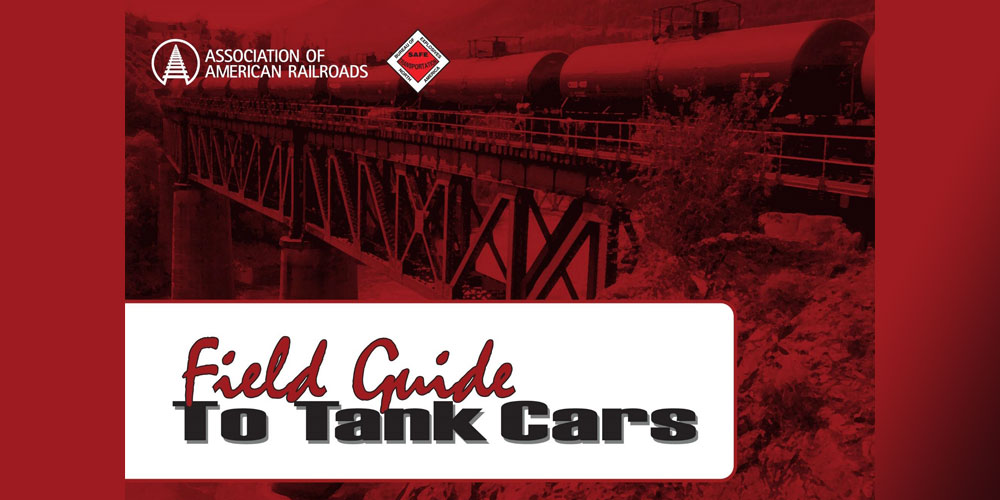
AAR’s Field Guide to Tank Cars Download
Are you a birdwatcher who’s spotted every owl and thrush, and wants to move on to a new field of study? Are you a model train hobbyist who wants to make sure your HO scale equipment accurately reflects modern regulations? Or are you a safety professional who deals with bulk dangerous goods in tank cars? If your answer to any of those questions is “yes,” the American Association of Railways (AAR) has published something that will make identifying a TC-111A100W5 or DOT-117R100W as easy as telling a Mourning Warbler from a Laughing Gull.
AAR’s Field Guide to Tank Cars, by Andy Elkins, is a resource for rail workers and particularly for emergency responders. Tank cars come in many varieties, and handling them safely or responding to spills means that you must know what type of car is involved. The Field Guide has been updated for its third edition to reflect current regulations and standards, which have changed over the past decade due to incidents such as the Lac-Mégantic explosion in Quebec.
Types of Tank Cars
The Field Guide starts with a discussion of the basic types of tank cars – non-pressurized tank cars (also known as “general service” or “low-pressure” cars), pressure tank cars for products such as liquid propane and cryogenic liquid tank cars, used for gases that are liquefied at low temperature, such as liquid oxygen. After explaining the DOT (U.S. Department of Transportation), TC (Transport Canada), and AAR tank car classes and specifications, author Andy Elkins goes on to discuss how to interpret specification markings, assisted with a helpful diagram of a typical mark.
Safety Systems
Next, the guide covers the safety systems found in tank cars, such as Pressure Relief Devices (PRDs), and the markings that must be displayed on tank cars to identify qualification specifics, such as the Thickness Test. Further sections deal with additional details about the various car types, illustrated with clear technical diagrams and photographs. This arrangement makes it an excellent resource for non-experts who want a quick summary of tank car marking and safety, as well as a good in-depth guide for those who need to know details of the fittings and safety devices for specific commodities such as chlorine or crude oil.
The guide includes an Annex covering recent changes relating to tank cars in North America, such as Transport Canada’s Protective Directions #34 and 38, and the “FAST Act” amendments to 49 CFR.
Use of This Guide
This guide would be a useful introduction for anyone who ships dangerous goods (or even non-dangerous commodities) in tank cars. While the “Hazardous Materials Regulations” of 49 CFR (in the U.S.) and the “Transportation of Dangerous Goods Regulations” (in Canada) are the controlling regulations, their tendency to cross-reference standards often makes it hard to pull together a full picture of requirements for selection and marking. The guide arranges information in a clear, logical flow, and the illustrations prove that pictures are really worth a thousand words.
The best part? The Field Guide to Tank Cars is available as a free PDF download from the AAR site.
Have questions about shipping hazardous materials by rail, or by any other mode? Contact our regulatory staff here at ICC Compliance Center 1.888.977.4834 (Canada) or 1.888.442.9628 (USA).





